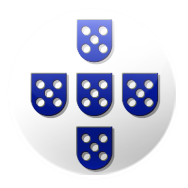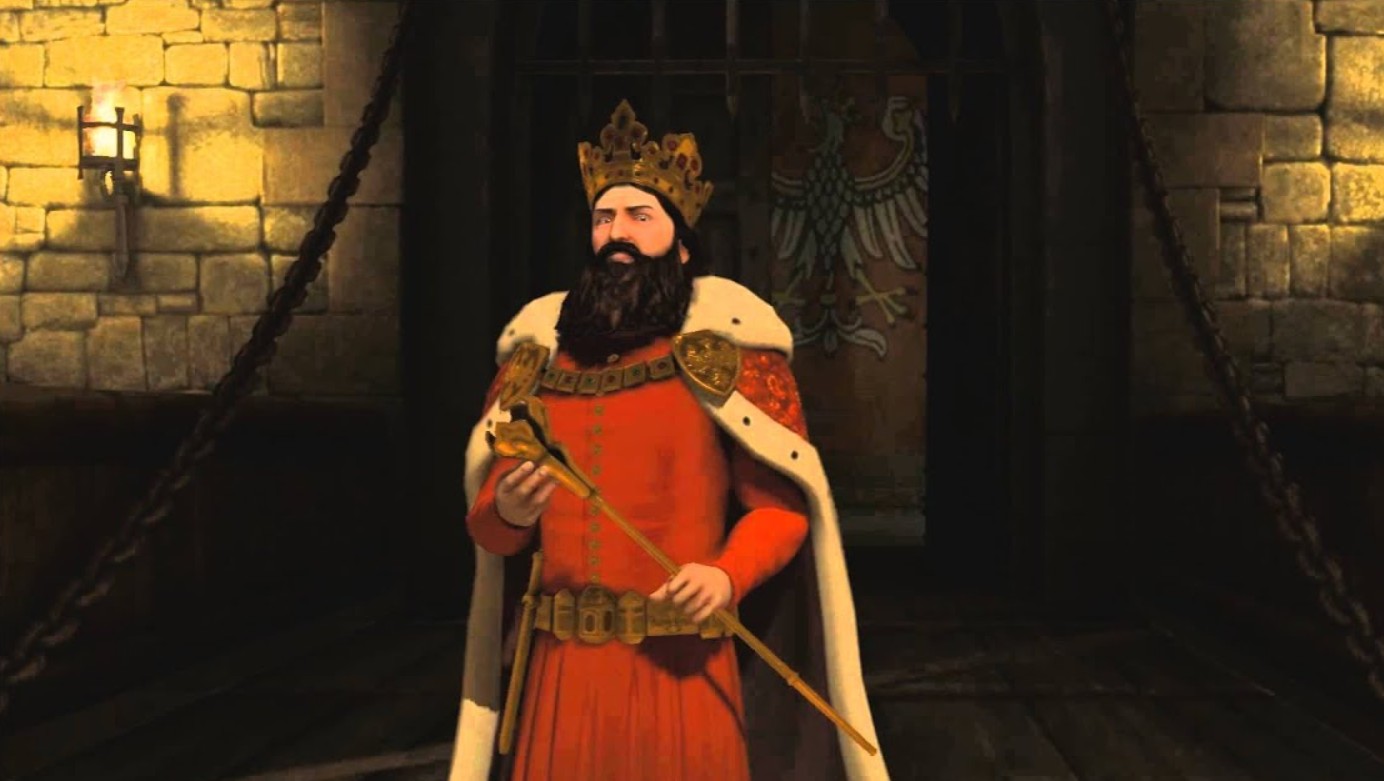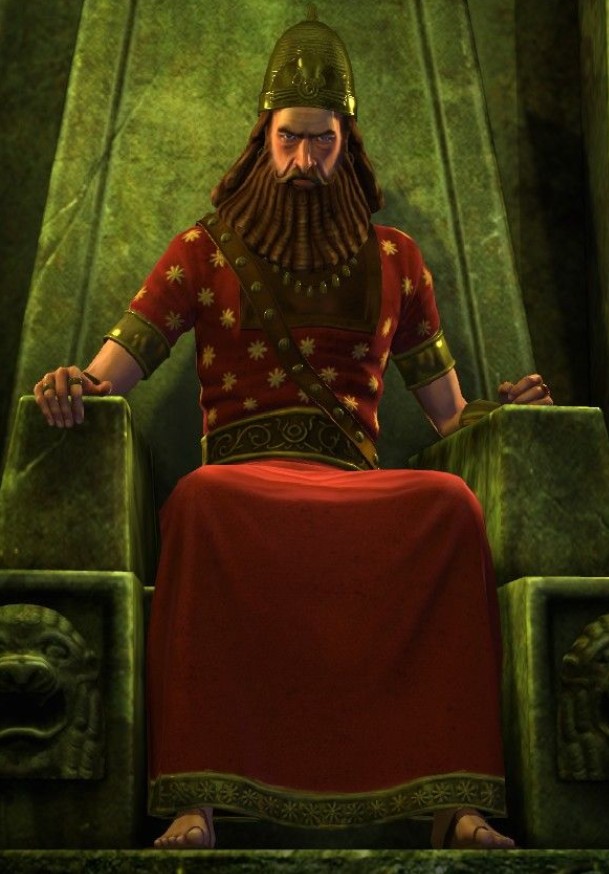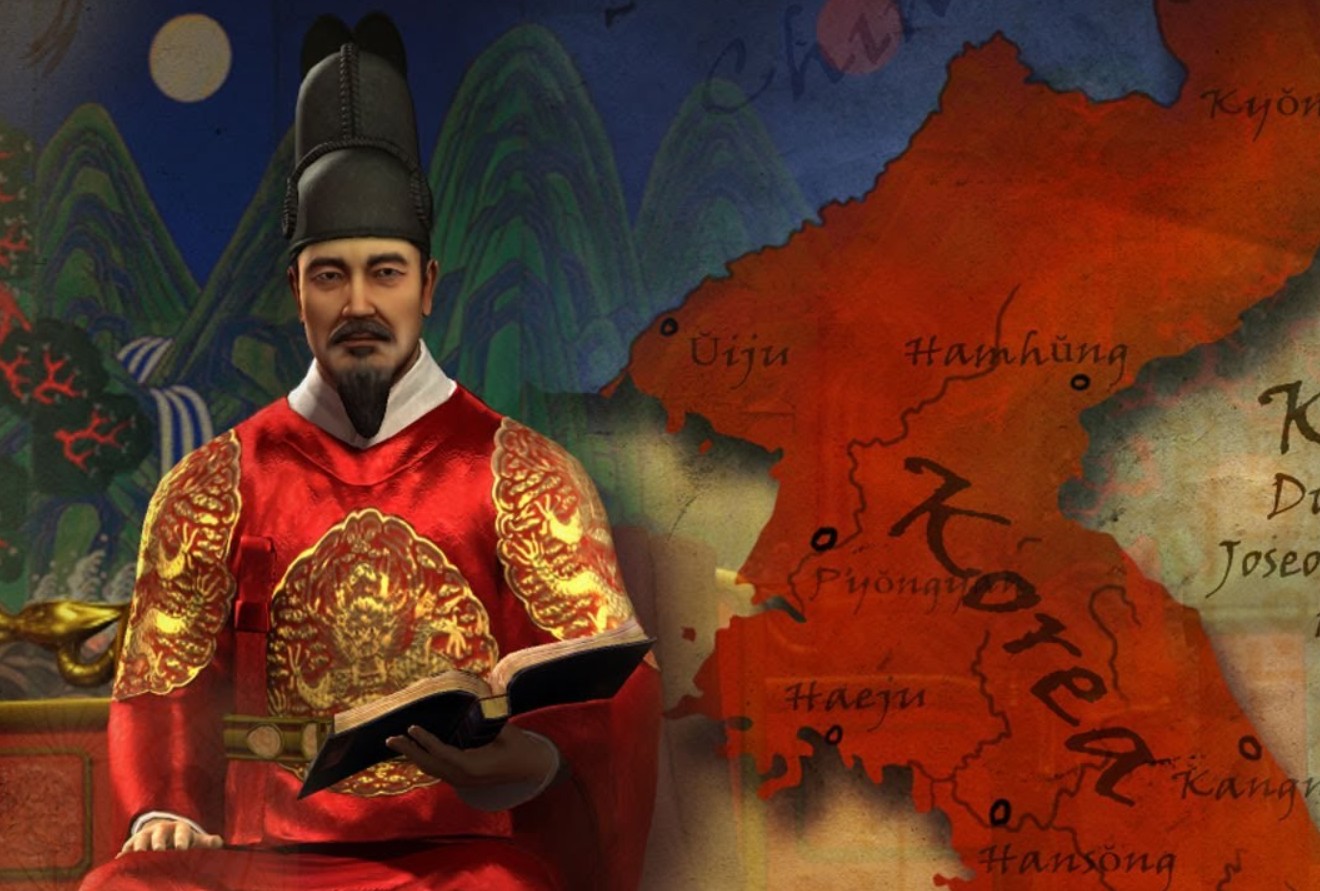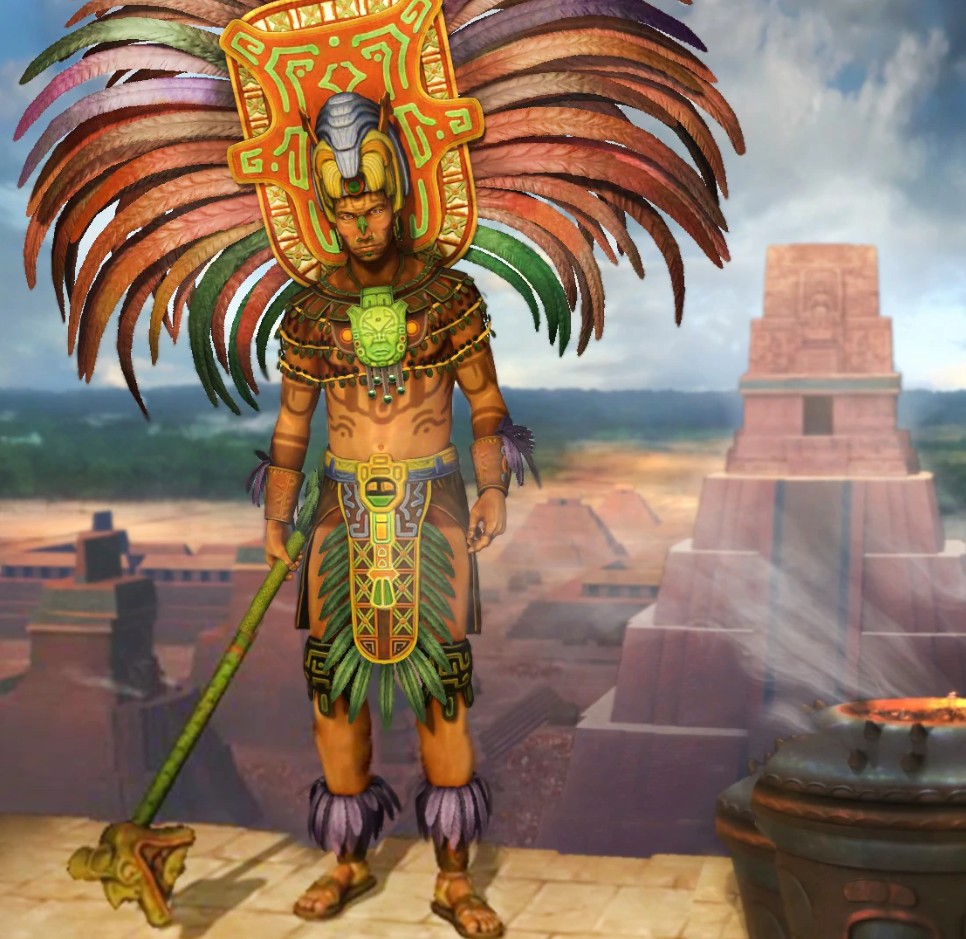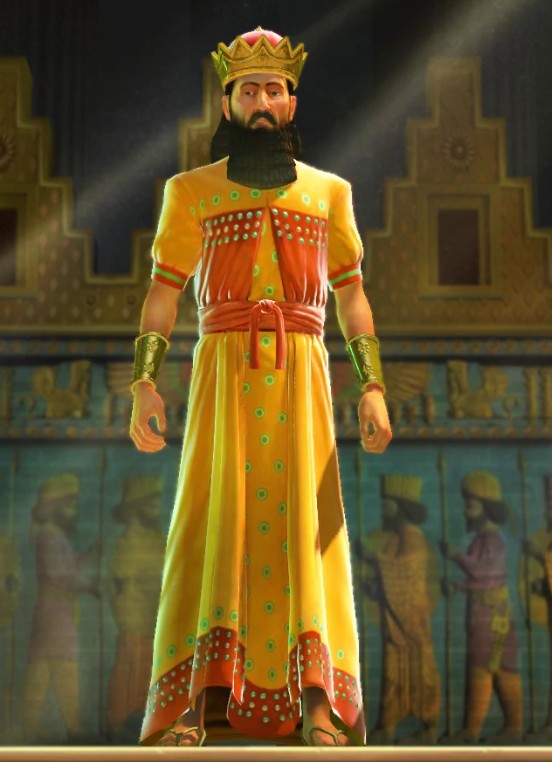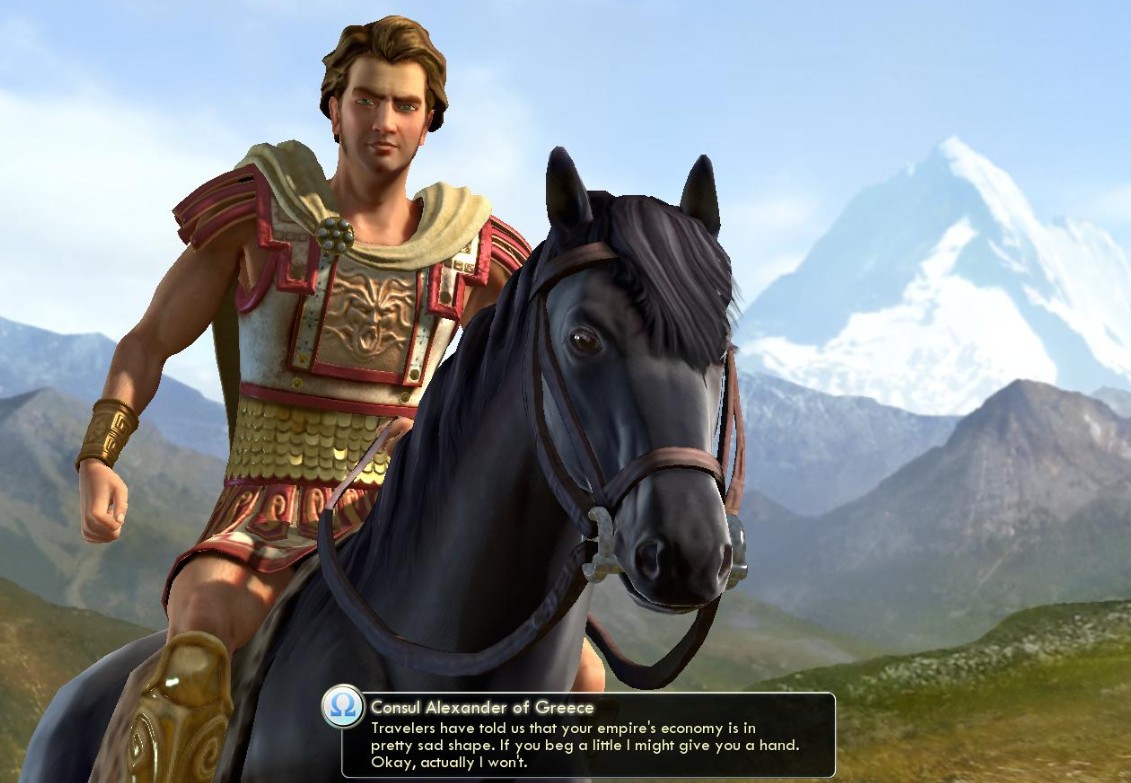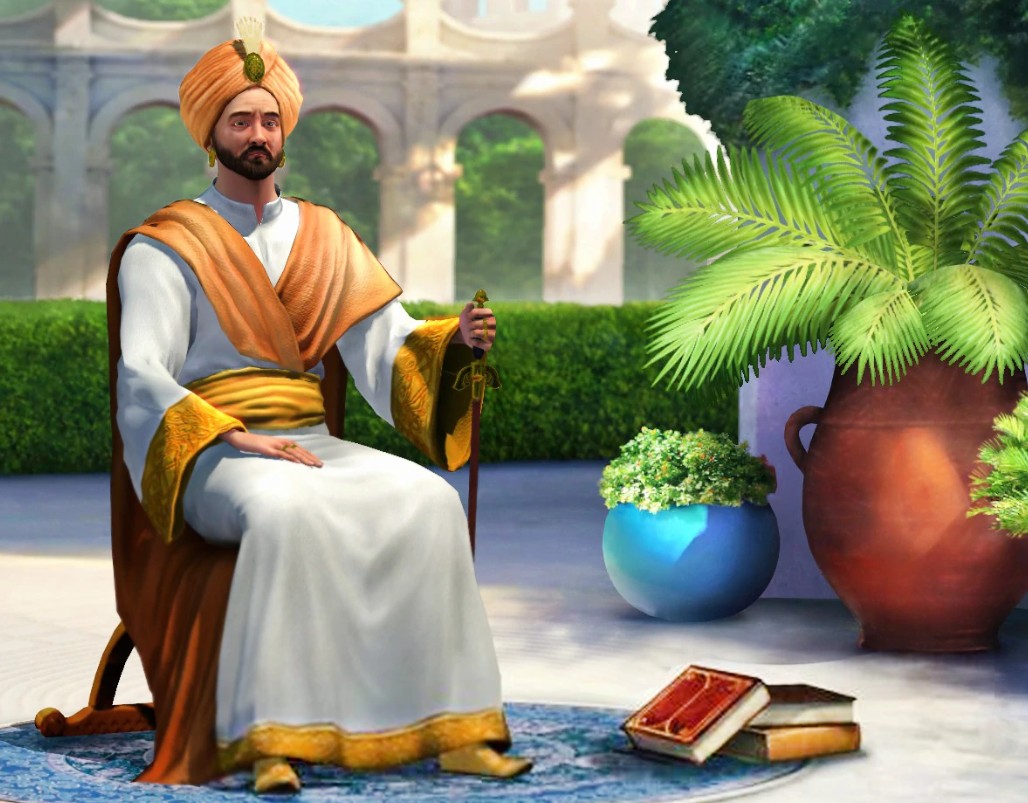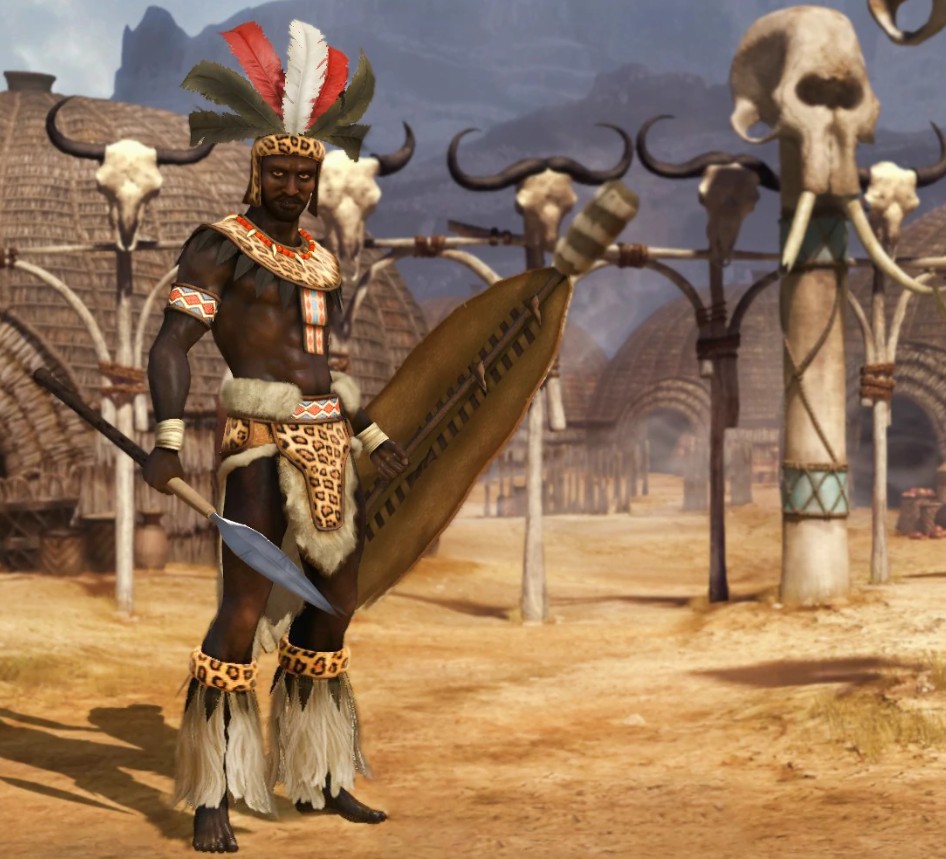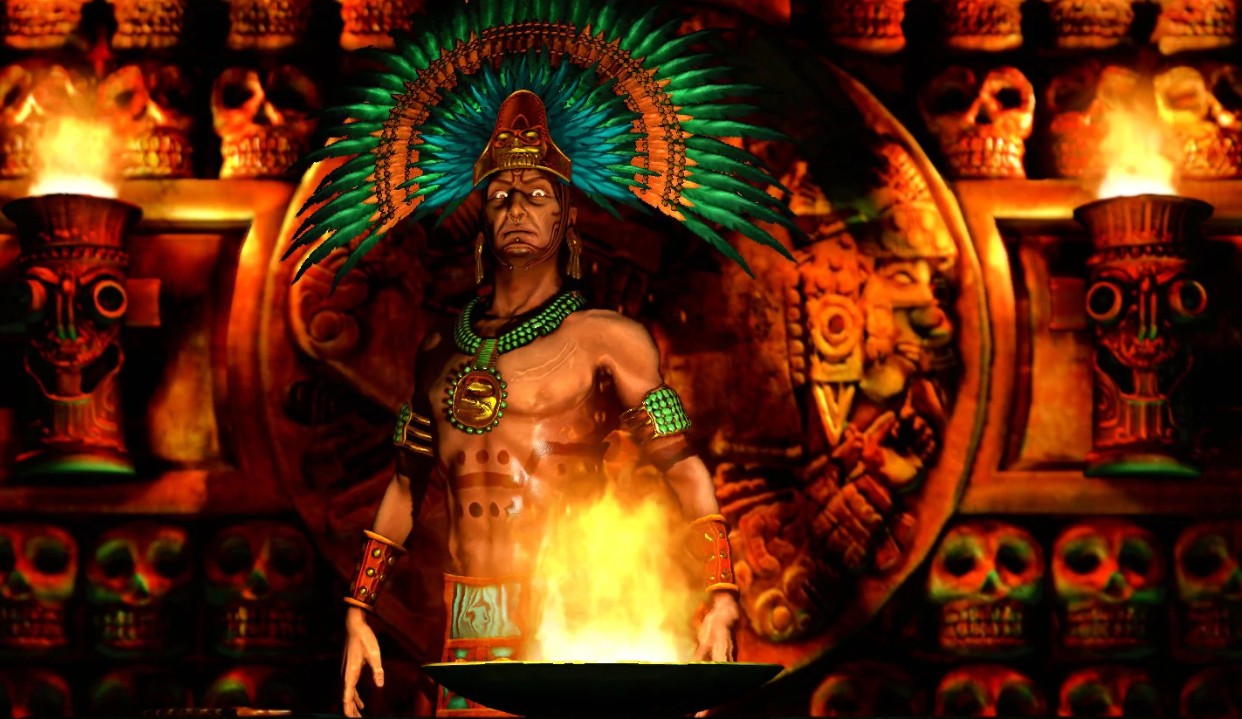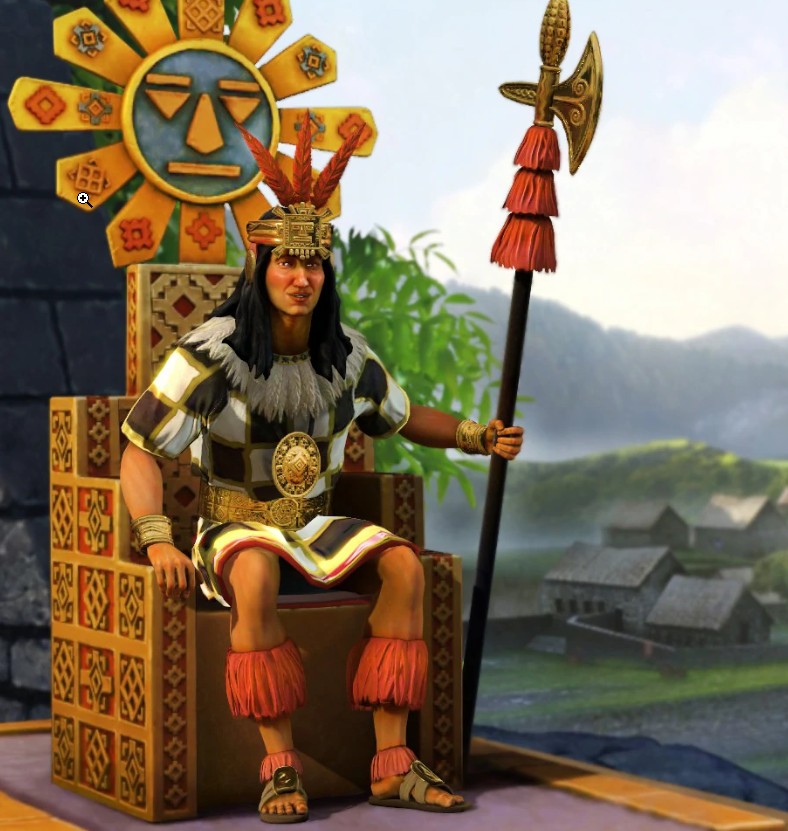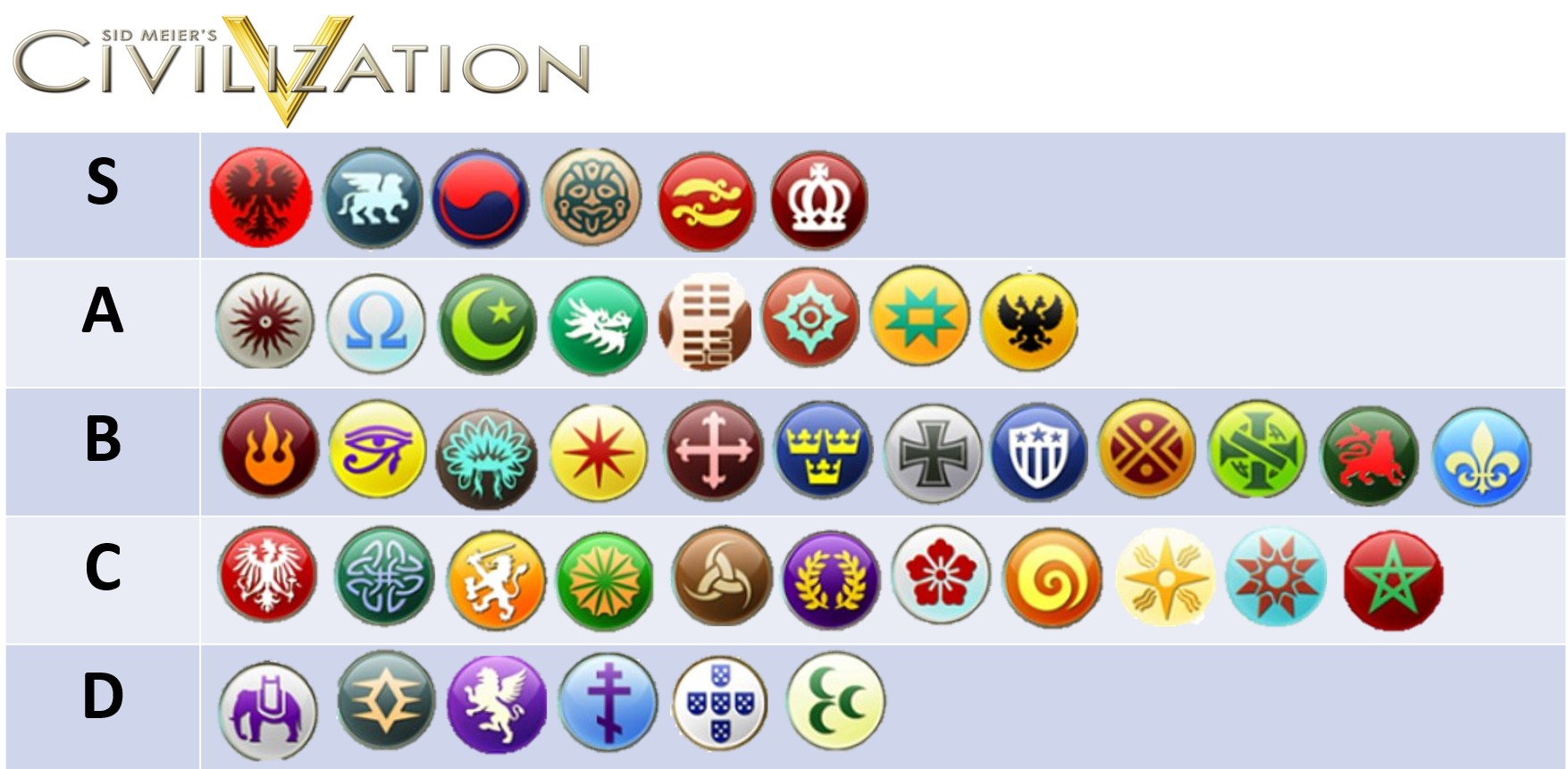цивилизация 5 португалия бонусы
Portuguese (Civ5)
Portugal
Introduced in Brave New World
Leader
Unique
Ability
Notes
Starts bias
Language spoken
Contents
Strategy [ ]
The Portuguese are one of the dominant trading nations in the game, oriented towards sea trade. Throughout the game, their Trade Routes produce double the 


Because their main power comes from city-states, Portugal should be concerned primarily with them, which points towards a diplomatic victory. Develop the Portuguese as a seafaring civilization while developing the Patronage policy tree, try to rush Astronomy, and start producing Naus ASAP. Then explore the world while trading, and send out Workers to build Feitorias in all city-states you consider to be strategic for you.
Civilopedia entry [ ]
History [ ]
Inhabited since prehistoric times, Portugal was reached by Phoenician and later Carthaginian traders in the first millennium BC, there meeting Celtic tribes that had pushed into Iberia across the Pyrenees. Over the following centuries, the Romans, Suebi and Visigoths ruled the peninsula; but the history of Portugal might be said to begin with the Muslim invasion in 711 AD. During the Reconquista, Portugal was born as an independent Christian kingdom in 1139. Spearheading the «Age of Discovery,» in the 15th and 16th centuries Portugal would establish the first global empire, stretching from South America to Africa to the Far East. The 1800s saw the dismantling of that empire, Brazilian independence in 1822 being the most serious blow to the power and prestige of Portugal. After the 1910 revolution which ended the monarchy, Portugal suffered through a succession of juntas and dictatorships until democratic elections were finally held in 1975. A new constitution in 1976 and membership in the EEC in 1986 insured that it would remain a progressive democracy. The erroneous view that Portugal has been no more than an outpost on the fringe of Europe was summarized by American journalist Richard H. Davis, who wrote, «Portugal is a high hill with a white watch tower on it flying signal flags. It is apparently inhabited by one man who lives in a long row of yellow houses with red roofs, and populated by sheep who do grand acts of balancing on the side of the hill.» But, with its rich history and culture, and now one of the world’s most globalized nations, Portugal is much, much more.
Climate and Terrain [ ]
The modern nation of Portugal occupies a portion of the Iberian Peninsula in Europe, as well as two archipelagos in the Atlantic: Madeira and the Azores. Not a large country, it nevertheless offers a diversity of terrain, ranging from the low-lying coast to rolling plains in the south to the Estrela Mountains, rising to 6500 feet at their highest point. The Azores lie 1019 miles west of Lisbon, straddling the mid-Atlantic Ridge; Madeira is 605 miles southwest of Lisbon. Three rivers arise in the Meseta, the central plateau of Spain, and flow through Portugal to the Atlantic; these are the Duro in the north, the Tejo in the center, and the Guadiana along the southeastern border. Portugal’s climate is Mediterranean. Despite cooler temperatures in the mountains, it is one of Europe’s warmest countries. Average annual rainfall ranges from 118 inches in the northern mountains to less than 12 along a stretch of the Duro. The archipelagos have a climate classified as Maritime Temperate, although Madeira is considerably drier than the Azores. With humans having been settled in the area for thousands of years, little is left of the original flora and fauna. The most notable vegetation is the several species of pine and oak. Portugal has the usual mammalian and avian species common across Iberia. On the other hand, Portuguese waters are among the richest in the world in terms of biodiversity, with thousands of species of fish including several of sardine, tuna and mackerel.
Ancient History [ ]
A distinct human culture emerges in Portugal in the Mesolithic period, c. 5500 BC. Within 2000 years, Neolithic tribes from Andalusia moved into Portugal, bringing agriculture, pottery and the working of soft metals. At some point prior to 500 BC, Iron-Age Celtic peoples crossed into Iberia from the north, supplanting the Neolithic inhabitants. Around the same time, voyagers from Phoenicia and Carthage established trading posts and settlements. When Rome gained control of the peninsula in 201 BC as result of the Second Punic War, the Lusitani federation resisted Roman rule from its fortresses in the west until the Celtic tribes were at last suppressed around 140 BC. In 25 BC, Caesar Augustus founded Augusta Emerita (modern Merida) as the capital of the province of Lusitania, which encompassed all of Portugal.
Muslim Iberia & Reconquista [ ]
Portugal would remain under Muslim rule for the next five-and-a-half centuries. In 1031 AD the Caliphate of Cordoba was dissolved into 23 separate «taifa» kingdoms, each with its own emir answerable to Damascus. Most of Portugal fell under the Taifa of Badajoz, but incessant warfare among the taifa led to conquest by the Almoravids from Morocco in 1086, who were in turn supplanted by the Almohad dynasty in 1147. The Moorish rule of al-Andalus, the Muslim portion of Iberia, was by turns enlightened and ruthless. Only the northern kingdom of Asturias remained Christian, defeating the Moors several times to retain its independence.
Founding of Portugal [ ]
The county of Portugal, a fiefdom of the Kingdom of Leon, was awarded to Alfonso Henrique by the king for his service in the efforts to drive back the Muslims. In 1128, the newly created Count of Portugal defeated his mother’s forces to insure his sole reign. For the next decade, Henrique conducted a continuous campaign against the Moors until, at the Battle of Ouique in July 1139, he won a decisive victory. Immediately after, he was unanimously proclaimed King Alfonso I of Portugal by his soldiers. Alfonso established his Cortes at Lamego, where he was officially crowned by the Archbishop of Braga. The new kingdom was recognized as an independent Christian state by the King of Leon and Castile in 1143, and by Pope Alexander III in 1179.
Alfonso I and his successors continued their push southward against the Moors. In 1249, Portugal’s Reconquista ended with the capture of the Algarve region, giving the country its present mainland borders. Following the Reconquista, Iberia was largely peaceful, and the kingdom prospered both economically and culturally. In 1383, John I of Castile, son-in-law to the aging and heirless king of Portugal, claimed the throne. A faction of lesser Portuguese nobles and commoners, led by John of Aviz (later King John I), defeated the Castilians and the House of Aviz ascended to rule Portugal.
Empire [ ]
Vasco de Gama final opened a sea route to India in 1498, bringing the wealth of the East to Portugal. Two years later, the errant fleet of Pedro Cabral would discover and claim the land of Brazil for the crown. A decade after that, Afonso de Albuquerque would conquer Goa in India, Ormuz on the Persian Strait, and Malacca in Malaysia. Other Portuguese merchants would establish trading posts along the shores of India, Taiwan, Japan and Timor. By the beginning of the 16th Century, the small nation of Portugal held dominion over the sea lanes of the Indian and South Atlantic oceans, making its economic, military and political power the rival of any in Europe.
Restoration [ ]
The Portuguese succession crisis of 1580 would lead to a union of Spain and Portugal under Philip II of Spain; although still a sovereign nation, this union deprived Portugal of a separate foreign policy, which in turn led to its embroilment in Spanish wars in Europe and abroad. Spurred by the diversion of income from its overseas colonies and trade to Spanish coffers, in 1640 AD an uprising of Portuguese nobles would restore independence to Portugal, in the form of the House of Braganza, which would supply rulers for both Portugal and Brazil.
Although Portugal would be liberated by guerrillas and Anglo-Portuguese forces under the command of Wellington, the five-year occupation and the relocation of the government would herald a slow but inexorable decline that lasted into the 20th Century. The erosion of the colonial empire, most significantly the independence of Brazil in 1822, would cripple Portugal’s economy. With the exception of colonial affairs and revolts, the government largely maintained an unofficial policy of isolationism. The nation fell behind other European countries both socially and technologically. Agriculture, including the fishing industry, and tourism became the major sources of income; Portugal came to be increasingly viewed as a «sleepy backwater of Europe.»
Revolution and Republic [ ]
Twice during this period, in 1892 AD and again in 1902, King Dom Carlos I was forced to declare Portugal bankrupt. In both cases, the announcements were followed by protests, riots, social turmoil, localized revolts, and widespread criticism of the monarchy. This culminated in the assassination in February 1908 of the king and the heir apparent, his son Luis Filipe. Carlos’ second son, Manuel II would assume the crown, but was unable to improve conditions. In October 1910, a popular revolution would discard the monarchy and establish a free republic. But economic instability, social chaos, and political unrest were fertile grounds for radicalism. In response, a 1926 coup d’etat led by the military established the Ditadura Nacional («National Dictatorship»). Governed by a series of military juntas, Portugal’s fortunes and influence continued to slip. Beginning in 1960, independence movements in Angola, Mozambique and Guinea resulted in the Portuguese Colonial War (1961-1974). As a result Portugal faced trade and arms embargoes and other punitive sanctions by the international community.
A New Order [ ]
The junta devoted blood and money Portugal could ill-afford in its efforts to resist decolonization. Facing a tide of dissent, both external and internal, the junta was finally swept away by the Carnation Revolution, a relatively bloodless left-wing military coup in April 1974. The revolution led to independence for the remaining overseas territories, as well as the restoration of democracy after a two-year transition period. The Portuguese constitution was rewritten in 1976 AD to accommodate both socialist and communist principles. Since then, the government has swung between neosocialism and neoliberalism. Land reforms and nationalizations were undertaken, and Portugal was obliged to twice allow International Monetary Fund stabilization programs to recover economically. In 1986, Portugal joined the EEC, and subsequently the European Union. In 1999, the last Portuguese colony, Macau, was handed over to the Republic of China. Through such efforts, Portugal has once again been integrated into Europe and taken its place among the fraternity of the world’s nations.
Factoids [ ]
In 1373 AD, the kings of Portugal and England signed a treaty of alliance; ratified by the Treaty of Windsor in 1386, the pact remains in force, making it the oldest continuous alliance in the world.
The «Great Lisbon Earthquake» (now estimated to be a 9 on the Richter Scale) and ensuing tidal waves in 1755 AD razed the city and devastated much of central and southern Portugal, causing damage and death as far away as North Africa. The death toll in Lisbon alone has been placed as high as 100,000 people, making it one of the deadliest earthquakes in history.
Fado is a music genre that originated in Lisbon in the 1820s, although its roots reach further back; it was recently added to the «World’s Intangible Cultural Heritage» list by UNESCO, the United Nations’ cultural organization.
Уровневый список CiV 5 [выявлены самые сильные и самые слабые цивилизации]
Ветераны вневременной франшизы Сида Мейера «Цивилизация» помнят, что «Цивилизация V» зародилась как спорная часть серии.
Переход от штабелирования юнитов к одному юниту на плитку, шестиугольные плитки и механику счастья, ограничивающую игрока пятью или шестью городами, сделали Civ V больше похожим на шаг назад, чем на улучшение.
К счастью, вышло расширение Brave New Worlds, а остальное, как говорится, уже история. Civ V теперь является фениксом франшизы, поднимающимся из огня, для многих это их любимая и первая запись в серии. Итак, если вы начинаете свое первое путешествие через века истории человечества или если вы опытный лидер, желающий попробовать новые фракции, этот ярусный список здесь, чтобы показать вам самые сильные и самые слабые фракции в Civilization V.
Сводка списка уровней
В этом списке мы будем ранжировать цивилизации по пяти различным уровням S, A, B, C и D. Мы будем сравнивать различные цивилизации по их уникальным бонусам. Есть множество этих бонусов, которые я буду называть следующими аббревиатурами:
ULA : Уникальные лидерские качества. Каждый исторический лидер обладает уникальными способностями, часто отражающими их достижения в реальной жизни.
UU : уникальный юнит. Каждая цивилизация имеет один, а иногда и два уникальных юнита, заменяющих определенные юниты базовой игры. Эти отряды предлагают различные военные преимущества для своей цивилизации в ту эпоху, когда они доступны.
УБ : уникальные постройки. Некоторые фракции получают уникальные здания, которые дают больше золота, культуры, веры или даже лучшие военные улучшения.
UI : уникальное улучшение. Некоторые цивилизации могут создавать уникальные улучшения плитки с помощью своих рабочих. Эти улучшения увеличивают доходность соответствующих плиток.
Начальная предвзятость: предвзятость к началу игры диктует тип местности, на которой они с большей вероятностью появятся в начале игры.
Чтобы решить, на какой уровень попадает каждая цивилизация, мы будем сравнивать эти бонусы, чтобы увидеть, какие из них дают лучшие преимущества на протяжении всей игры.
S уровень
Этот уровень будет включать фракции, чьи бонусы очень хороши. Цивилизации этого уровня без проблем будут продвигаться вперед в таблице лидеров и будут иметь постоянные бонусы, полезные от древней до атомной эпохи. Цивилизации этого уровня включают:
Уровень
B Уровень
Фракции среднего уровня, размещенные здесь, имеют сильные преимущества, которые зависят от правильных условий, чтобы максимизировать их эффективность. Бонусы в основном ситуативны и могут быть как хорошими, так и плохими. У этих цивилизаций нет ни огромных недостатков, ни реальных преимуществ.
Уровень C
Эти фракции вполне нормальные, на грани посредственности. У них практически нет преимущества перед ИИ, а некоторые из их бонусов могут даже быть помехой для игрока. Чтобы максимально использовать эти цивилизации, требуются сложные стили игры и очень специфические условия.
D Уровень
Эти цивилизации ни на что не годны, кроме, может быть, дополнительного испытания. Многие из этих цивилизаций, вероятно, могли бы использовать исправления, потому что их бонусы очень ситуативны и их сложно использовать. Играя за одну из этих фракций, ваши бонусы будут либо редко применимы, либо прямо пагубно сказываются на успехе вашей игры.
Чтобы лучше понять, что делает цивилизацию сверхмощной или нет, теперь я дам подробную разбивку фракций уровня S и уровня A. Здесь мы рассмотрим, что делает эти фракции потенциальными нарушителями игры, даже в руках неопытных игроков.
Польша (S уровень)
Во всех остальных списках Civ V уровня, которые я читал, Польша находится на вершине. Их лидер Казимир III имеет один из лучших ULA во всей игре. В сочетании с довольно хорошим уникальным зданием и начальным уклоном в равнины, Польша — это та цивилизация, которая может легко добиться любой победы.
Почему они перегружены?
Общий рейтинг мощности Польши: 98/100
Вавилон (S уровень)
Навуходоносор II Вавилонский
Вавилон — отличная цивилизация для ранней игры. У него есть сильные UU и UB, которые защитят ваши земли от поджигателей войны. Однако ULA Навуходоносора II делает эту цивилизацию S уровня.
Почему они перегружены?
Общая мощность Вавилона: 96/100.
Корея (S уровень)
Седжон великий из Кореи
Наука — самая важная переменная в любой игре Civ. У наиболее технологически продвинутой команды больше возможностей вести войну, так как у нее будут лучшие юниты раньше, чем у других цивилизаций. Преимущества Кореи перед наукой позволят ей опередить другие технологические фракции, и их достаточно, чтобы компенсировать ее посредственные UU.
Почему они перегружены?
Общий рейтинг мощности Кореи: 95
Майя (S уровень)
Помимо того, что у майя один из самых крутых лидеров в игре, он также является грозным противником. Их ULA с их знаменитым календарем познакомит вас с многочисленными великими людьми со времен средневековья. Добавьте это к их замечательному UB, и у вас будет цивилизация, которая может перенести вас на край света или, по крайней мере, в 2012 год.
Почему они перегружены?
Общий рейтинг силы майя: 95/100
Персия (S уровень)
Дарий I Персидский
Если вы изо всех сил пытаетесь предотвратить банкротство, вам помогут фантастические ULA и UB Дариуса. Персия может стать одной из самых богатых и могущественных цивилизаций в игре благодаря более продолжительному и более частому золотому веку. Обладая невероятным потенциалом в финале, Дарий имеет шанс стать настоящим богом среди людей.
Почему они перегружены?
Общий рейтинг мощи Персии: 93/100
Англия (S уровень)
Королева Англии Елизавета I
Англичане великолепны и поверьте мне, как шотландцу, я не говорю это легкомысленно. С двумя блестящими UU, которые помогут вам уничтожить ваших противников в эпоху средневековья и эпохи Возрождения, Англия может по-настоящему управлять волнами. Как и любые города, расположенные рядом с ними.
Почему они перегружены?
Общий рейтинг мощи Англии: 92/100
Гунны (уровень A)
Хотите одержать победу над доминированием? Что ж, не смотрите дальше. Атилла сочетает в себе огненный ULA с мощными осадными юнитами, чтобы сделать одну худую машину для подлого убийства.
Почему они перегружены?
Общий рейтинг силы гуннов: 90/100
Греция (уровень A)
Александр Великий Греции
Каждый раз, когда я играю в игру с Грецией в качестве одного из ИИ, они в конечном итоге становятся моей финальной битвой с боссом. Их преимущества в ранней игре делают их очень сложными для уничтожения в древнюю эпоху, но к концу игры их союзники-города-государства делают их достойным противником даже для более агрессивных фракций.
Почему они перегружены?
Общий рейтинг мощи Греции: 89/100
Аравия (уровень A)
Харун ар-Рашид из Аравии
У Аравии есть все шансы стать революционной цивилизацией. Однако этот потенциал может быть полностью реализован только при правильном стартовом местоположении, а иногда и чудо. Хотя цивилизация все еще остается могущественной, может потребоваться более опытный игрок, чтобы максимально использовать их уникальные преимущества.
Почему они перегружены?
Общий рейтинг мощности Аравии: 87/100.
Китай (уровень A)
Еще одна мощная военная цивилизация, китайский UU, была грозной единицей со времен Civilization IV. Civ V делает их еще лучше, с сильным ULA, что еще больше увеличивает их военную мощь. Китай — сильная цивилизация для новичков и всех, кто привык вести войну в Civ V.
Почему они перегружены?
Общий рейтинг мощности Китая: 86/100
Зулусский (Уровень A)
Как и гунны, шака зулусов — отличный выбор для игроков, стремящихся к победе над доминированием. Благодаря отличным UU и ULA, эта цивилизация способна создавать и поддерживать огромные армии, не теряя слишком много золота.
Почему они перегружены?
Общий рейтинг мощности Зулу: 85/100
Ацтеки (Уровень A)
Я одержал свою первую победу над ацтеками. Их UU очень полезен в джунглях и достаточно силен, чтобы сражаться с ранними городами, а это означает, что вы можете начать игру с самого начала. Хотя их ULA, безусловно, не самый лучший, он, вероятно, самый подходящий.
Почему они перегружены?
Общий рейтинг мощи ацтеков: 84/100
Инки (Уровень A)
Сотрясатель земли инков Пачакути
На первый взгляд, Инка может не выглядеть как цивилизация, нарушающая правила игры. Они получают уникальную ферму в качестве одного из бонусов, а их ULA в лучшем случае выглядит довольно незначительно. Однако есть несколько цивилизаций, способных накапливать столько продукции и еды, как инки.
Почему они перегружены?
Общая мощность инков: 82/100
Россия (Уровень A)
Екатерина Великая России
Последняя цивилизация уровня A, Россия — это цивилизация-монстр, когда дело доходит до производства. ULA может значительно ускорить создание инфраструктуры на ранних этапах игры. Дополнительные молотки также делают его конкурентоспособной фракцией, когда дело доходит до строительства чудес. Великие пирамиды Москвы? Теперь у меня есть кольцо.
Почему они перегружены?
Общий рейтинг мощности в России: 80/100
Заключение
Список уровней Civ V
Важно помнить, что любая из этих цивилизаций способна выиграть одиночную игру. Даже такие цивилизации, как Венеция, занявшие последнее место в этом списке, забавны и интересны для использования против ИИ. Хотя в случае с Венецией избегайте многопользовательской игры, так как более конкурентоспособные фракции затоптут вас в грязь. Если у вас возникли проблемы с победой в первом матче, не помешает попробовать одну из цивилизаций уровня S или A в этом списке. Наличие преимущества на протяжении всей игры поможет вам освоить различные механики и убедиться, что вы сможете играть на уровне сложности Божество в кратчайшие сроки.
